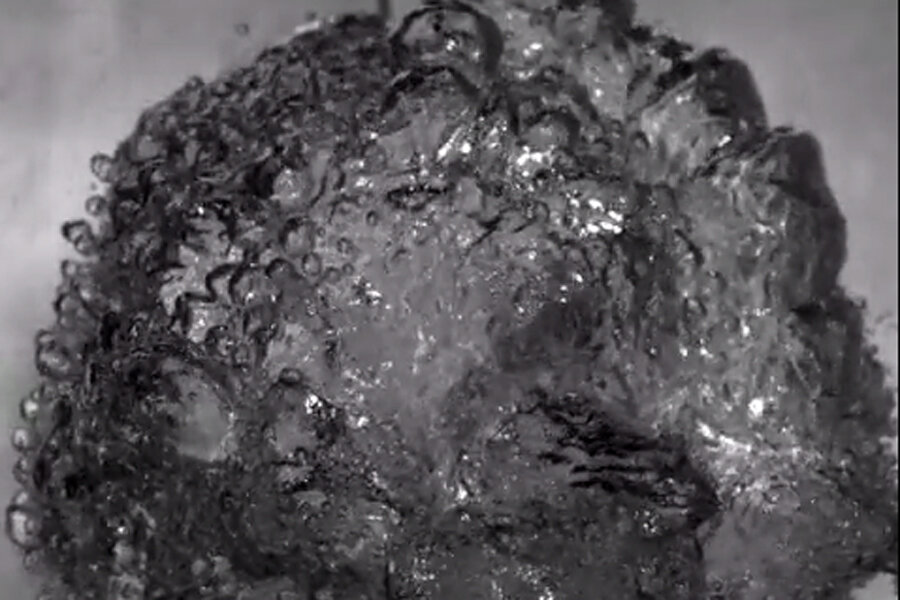Why water balloons popped underwater seem to explode
Loading...
Why are slow-motion YouTube videos so popular? Maybe because they allow us to view the world in a new way. We’ve all seen someone sneeze, so we know the action looks (and feels) like. But slow it down and you get a whole new perspective. Brows furrow. Eyelids flutter. Snot issues forth in alarming quantities. An everyday action becomes fascinating because of the thousands of hitherto-unseen details that make it up.
It’s the same story with a balloon popping underwater. You can imagine the process in your head: As the balloon is pricked, the tension in the rubber surface is release and it contracts rapidly, allowing the water inside and outside the balloon to mix. But when you watch the balloon popping in super slow-motion, you notice something surprising: the water inside the balloon seems to boil, erupting into the surrounding liquid with speed and ferocity.
What’s going on there? Presumably the water temperatures inside and outside the balloon are about equal – so why the eruption when they suddenly meet?
There are actually two kinds of instabilities at work here, causing the violent-looking reaction between the balloon water and the surrounding water. The first is Rayleigh-Taylor instability, which describes the interaction between two fluids of differing densities. John William Strutt, also known as Lord Rayleigh, discovered that the more-dense fluid will disturb the less-dense one, causing “perturbations” along the boundary between the two and leading to further disturbance. G. I. Taylor, a British physicist, later realized that the same thing can happen when two fluids are accelerated – such as when the balloon itself disappears and the water inside accelerates outward into its surroundings. That’s why, after the initial ripple caused by the contraction of the balloon’s surface, the water inside begins to bubble.
Rayleigh-Taylor instability explains the rippling seen as the two bodies of water initially collide. But it gives an incomplete picture, since it describes fluids with different densities, such as oil and water. Why does the balloon water expand outward so violently? That behavior is described by Richtmeyer-Meshkov instability, which explains how small perturbations in fluids can grow linearly over time to form highly chaotic interactions. You can see that chaos in the video, as the balloon water rolls and roils, eventually floating upward to the surface of the surrounding water.
The underwater balloon-popping video is undeniably cool because it shows a surprising interaction that’s normally invisible to our eyes. The video was filmed with a special camera at 36,000 frames per second, and the whole interaction takes only about 0.16 seconds in real time. Without a high-speed camera, you might blink and miss all of these complex interactions.
If you’re interested in seeing other surprising interactions only observable with high-speed cameras, check out paint exploding (at 15,000 frames per second) and a man being slapped in the face (at 4,000 frames per second). Watching paint dry is the standard for boredom, but with a high-speed camera, watching paint explode is fascinating.








